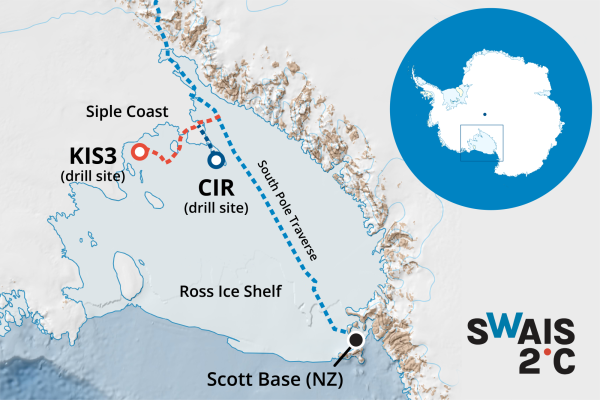SWAIS2C is seeking precious geological records from the sediment deep below the Ross Ice Shelf, to determine just how much the West Antarctic Ice Sheet melted during the last interglacial and other past times when climate was warmer than present.
To recover these sediment cores, our small team of drillers, engineers and researchers will travel hundreds of kilometres via traverse (convoy of polar vehicles) and plane to two locations at the Siple Coast on the southeast margin of the Ross Ice Shelf – Kamb Ice Stream (KIS3) and Crary Ice Rise (CIR). We will drill through more than 500 metres of ice and up to 200 m into the seafloor or Antarctic continent below. We’re drilling further and deeper into West Antarctica than has ever been attempted before, to understand more about Antarctica’s potential contribution to future sea-level rise.
Antarctic field operations commenced at KIS3 in 2023/2024 and continued in 2024/2025, co-led by Tina van de Flierdt and Richard Levy. A third field season is planned at the CIR in 2025/2026, co-led by Molly Patterson and Huw Horgan.
Follow our updates from our adventure at our News from the Ross Ice Shelf.

Our drill sites
**KIS3 (Kamb Ice Stream Site 3), where we need to drill through floating ice ~590 m thick, with an ocean cavity of ~55 m and tidal range ~2 m.
**CIR (Crary Ice Rise Site 1), where the ice is grounded and ~516 m thick with no ocean cavity, so no tidal compensation is required.